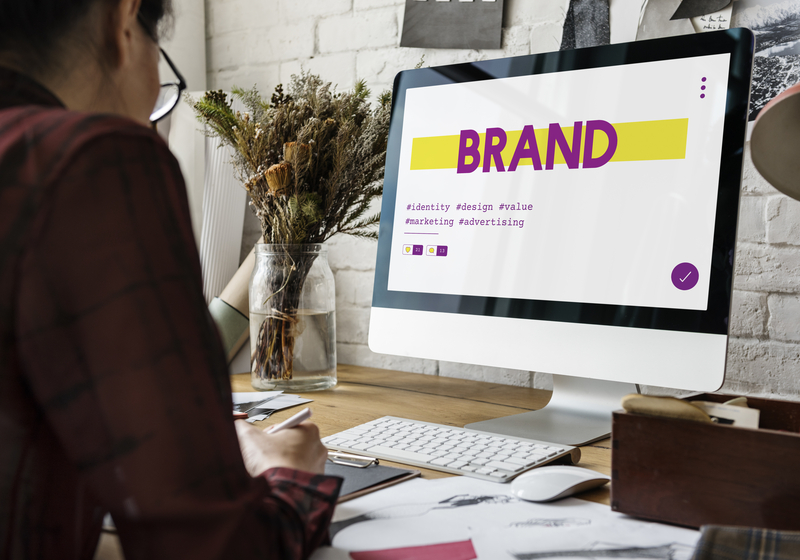When it comes to making a decision, less is more. But if you are looking for the right brand fonts for business, the job may be quite overwhelming since there are countless fonts out there. You can even download many fonts for free.
So, perhaps if you imagine selecting them will be in a matter of hours, well, make them a few days. We have gathered useful tips to help you make better decisions and offer greater clarity. Here are seven tips when opting for the right brand fonts for business.
The Important of Fonts in Branding

You might already be aware that selecting brand fonts is important since you are now looking to sort out the best fonts. The font is, indeed, a crucial element in a brand. Whether you are aware of it or not, fonts can evoke a certain feeling and exhibit the brand’s positive aspect if chosen correctly.
Take some examples, like Coca-Cola and Sony. While Sony uses Clarendon, which showcases clearness and directness, Coca-Cola uses Spencerian script, which looks casual, cool, and high-spirited. As the two brands successfully came with the right font, they can advertise their best sides.
7 Tips to Select The Right Brand Fonts for Business

Now that you understand the importance of a font for your brand, there are some important things you should pay attention to when choosing your brand fonts. Learn more below.
Branding
Be certain that your brand fonts represent the character and personality of your brand. Great brand fonts are not only unique, but also legible, work on every platform, and embody your business personality.
By selecting the perfect fonts that communicate your brand, your customers will be able to connect, relate with, and remember it easily. You can actually look for emotions elicited by different types of fonts. For example, Slab Serif showcases boldness, importance, and impactful.
Meanwhile, mono-spaced will work perfectly if you are hoping to show something edged, sophisticated, or techy.
Clear and Readable
The next important thing is making sure your font is clear and readable. Just like images, typography also speaks a thousand words. You probably want to use the most unique and stylish font possible, but never sacrifice readability and clarity.
Always consider the measure, font size, type weight, and color to ensure your audiences understand your font. You should also know that when you use traditional Serif or Sans, some translate well on screen, and some are just better on paper.
In addition, you might also want to avoid a cursive typeface such as Vivaldi. It is a beautiful and aesthetic font, but it is rather difficult to read for a brand’s name.
Serif or Sans
The first decision most people make when selecting fonts is whether they’re using Serif or Sans. The important key point when pointing between the two is the length of your text. Serif typefaces will work better if it is short, as they have long lines.
The target audience is the next important key point. Sans is more suitable for youngsters and those who have definite visual impairments. Serif, in the meantime, suggests professionalism, reputability, and authority. For example, the New York Times uses this old-style serif typeface.
There are surprisingly safe Serif and Sans typefaces. Safe Serif fonts are Times New Roman, Georgia, and Lucida. Safe Sans typefaces include Arial, Verdana, and Tahoma.
The Font Must Be Versatile
Another important factor to consider is making sure the font is versatile. Your brand fonts will be used for a long time and for across your branding. The font will be used in printed and on-screen advertisements, business cards, billboards, web design, mobile interfaces, and even stickers.
That is why your fonts must be versatile and look good on all sizes of products. Some typefaces are believed to be versatile fonts. Some of them are sans-serif Myriad Pro, League Gothic, Cabin, Corbel, Helvetica now, Futura, Open Sans, and Code Next.
For example, Futura is used by Nike and Dolce & Gabbana, Myriad Pro is used by LinkedIn, and Helvetica is used by Energizer.
Narrow Your Choices
As already mentioned earlier, too many choices get you overwhelmed. Since fonts are an inexhaustible supply of options, choose a few fonts to shrink your options. Start with three to five different fonts and see how they work for your brand.
Later, compare them side by side and analyze them alone. Once you’ve decided, look for feedback from your friends, family, or colleagues. Remember that people’s opinion is also important because your brand fonts aim at people as your target customers.
Selecting Two Fonts
Avoid using too similar typefaces if you use two different fonts for your brand. When you display two fonts, you surely want to showcase diversity. One way to do it is by avoiding identical fonts.
Some famous brands that use two fonts are JAC Motors, Whole Foods Market, and Harley Davidson Motor Cycles. So, when you unite two fonts, make sure the two have distinctive contrast but create harmony at the same time. It is also important to display a clear hierarchy. So, your customer can tell which one should be more prominent.
License
After determining which fonts to use, ensure you have the right license. There are countless typefaces out there. Some are free, while others should be purchased. Check the general licenses thoroughly.
When fonts are free, usually they also come with certain conditions. Mainly, the condition will read it is free for use for promotional materials but not allowed for products being sold. Therefore, always take note of what boundaries the licenses may be imposed.
Those are seven tips for selecting the right brand fonts for your business. The right typefaces can make everlasting designs, while the wrong one can ruin everything. Look up notable or famous brands you admire and learn the typefaces those brands use. You will be able to see that different letterings channel different impressions.
